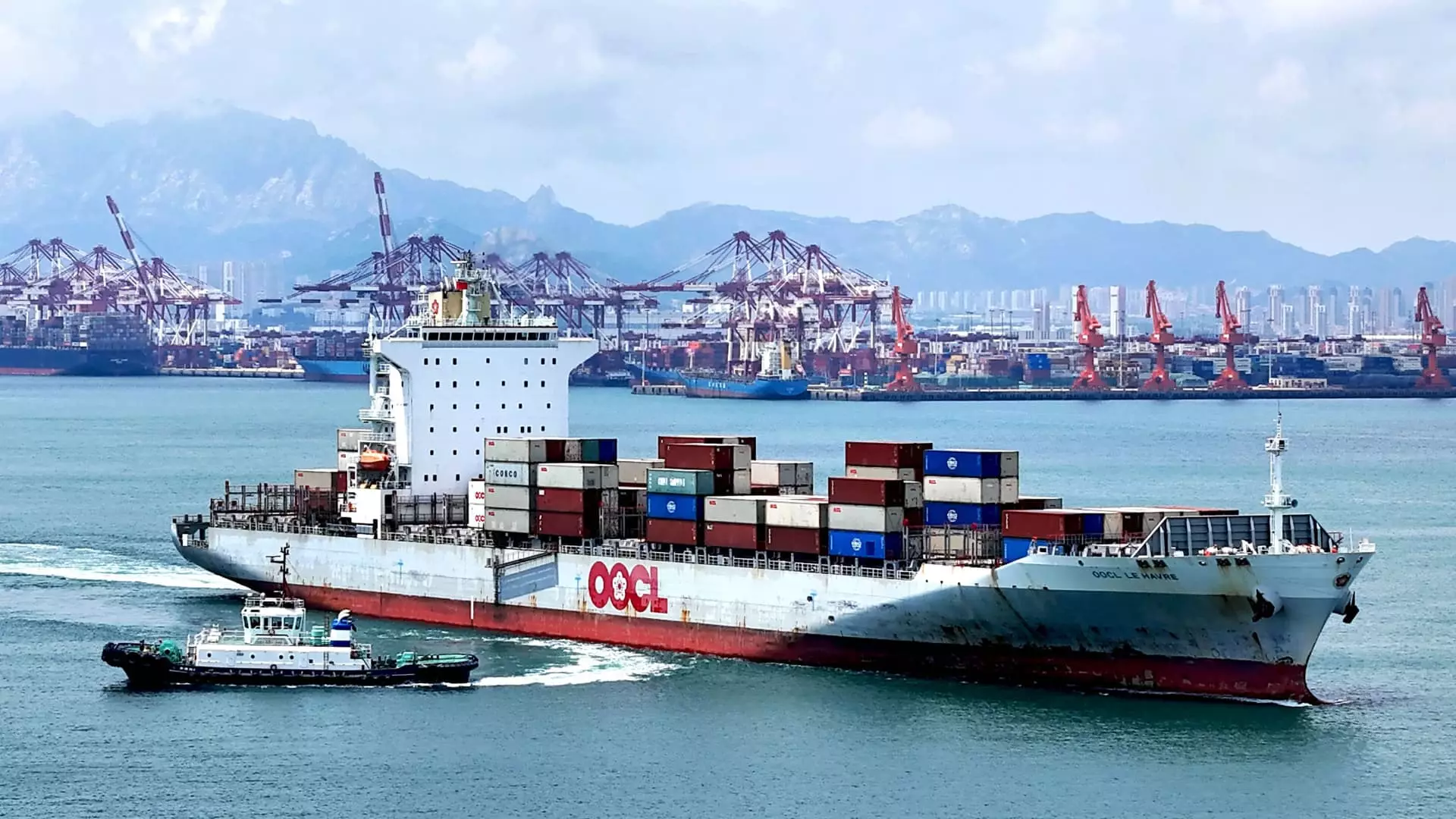China’s customs authority released trade data for November that fell short of market expectations, intensifying concerns regarding the nation’s economic resilience. Both exports and imports exhibited unexpected declines, suggesting persistent challenges in consumer demand and looming tariff threats could be taking their toll on the world’s second-largest economy. With a remarkably high dependency on international trade and its ramifications on domestic growth, these indicators reveal important insights into China’s economic trajectory.
The report indicated a concerning 3.9% decline in imports, marking the steepest drop since September 2023. Market analysts had rather optimistically predicted a modest increase of 0.3% for imports. Meanwhile, the export data showcased a challenging overall picture with a 6.7% growth year-over-year in U.S. dollar terms. Although positive on the surface, this figure is significantly lower than the previous month’s robust 12.7% increase. Forecasts had suggested an even more optimistic growth of 8.5%, further unveiling the discrepancy between actual performance and market expectations.
The Impact of Tariff Threats on Trade Dynamics
Despite the slowdown, some economists are cautious not to declare the end of China’s export surge. Zichun Huang, a notable economist at Capital Economics, emphasized that while U.S. tariffs could potentially diminish export volumes by about 3%, the effects may not manifest immediately. Interestingly, in the short term, these tariff threats might even catalyze a surge in exports, as U.S. companies preemptively increase orders for Chinese goods. This nuanced prediction underscores the complexities of international trade, reflecting adaptive strategies by businesses in anticipation of changing market conditions.
Furthermore, it’s suggested that import volumes may witness a temporary recovery due to accelerated fiscal spending aimed at stimulating demand in industrial commodities. This dynamic highlights how government interventions could positively influence trade metrics, albeit with caution regarding their short-term versus long-term effects on economic stability. The interplay of policy responses and market realities is pivotal as China navigates these turbulent waters.
Digging deeper into the specifics of regional trade, it’s noteworthy that exports to major trading partners such as the United States, the European Union, and the Association of Southeast Asian Nations (ASEAN) all experienced year-over-year increases. Particularly, exports to ASEAN countries surged nearly 15%, showcasing a potentially advantageous shift in trade relationships within the region despite a corresponding decline in imports from ASEAN.
However, the same cannot be said for China’s trade relationship with the United States, where exports increased by 8% while imports saw a stark decline of over 11%. This juxtaposition illustrates a fundamental imbalance, potentially due to shifting supply chains and import reliance. Similarly, the trade dynamics with the European Union displayed comparable trends, with exports rising by 7.2% yet imports shrinking by 6.5%.
Among the sectors demonstrating growth, China’s rare earths exports offered a glimmer of positivity, increasing by nearly 5% in November. Interestingly, the cumulative exports for the year through November rose by 6.6%, despite significant policy changes aimed at regulating the domestic rare earths industry tied to national security concerns. Additionally, steel exports exhibited robust growth, surging by 16% year-over-year, indicating a strong performance that could see China crossing the 100 million metric ton mark for the year—a level not witnessed since 2016.
This sectoral resilience amidst overall economic challenges raises questions about sustainability and future growth. While exports extended a lifeline for the struggling economy, weak domestic consumption and a protracted housing market downturn continue to pose serious risks.
Future Outlook amid Economic Stimulus Efforts
The recent trade figures emerged on the heels of pledges from China’s leadership to enhance monetary and fiscal policies for stimulating growth in the upcoming year. By committing to “unconventional counter-cyclical adjustments,” the government seeks to boost domestic demand, vital for sustainable long-term recovery.
Looking ahead, some analysts remain cautiously optimistic. Erica Tay, from Maybank, suggests that export growth could accelerate into early 2025, driven by U.S. importers front-loading Chinese purchases. Yet, this optimism may be overshadowed by anticipated drops later in the year as tariff impacts become more pronounced.
With manufacturing activity showing signs of slight recovery and consumer inflation reaching a five-month low, the interplay of macroeconomic indicators suggests a challenging yet potentially navigable path forward for China. The coming months will undeniably require agility and strategic foresight as the nation grapples with the intricate realities of a fluctuating global economy.


Leave a Reply